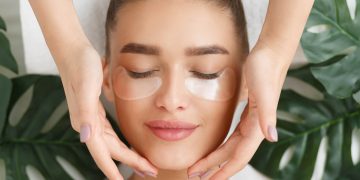Introduction: Understanding Combination Skin
Combination skin refers to a skin type that exhibits characteristics of both oily and dry skin, often in different areas of the face. For individuals with this skin type, the T-zone—forehead, nose, and chin—is typically more oily, while the cheeks, jawline, and other areas may feel dry or normal. This unique combination can make choosing the right skincare routine challenging, as different parts of the face need different treatments.
The key to managing combination skin is understanding its nature and learning how to address both dryness and oiliness effectively. Over time, the right skincare routine can help balance the skin’s oil production and maintain hydration levels. The goal is to keep the skin feeling refreshed and looking healthy without exacerbating either the oily or dry areas. With that in mind, let’s explore how to establish a routine that targets the distinct needs of combination skin.
Balancing Oily and Dry Areas: Targeting Different Skin Zones
To address combination skin, it’s important to understand which areas are oily and which are dry, as treating them the same way can be counterproductive. The T-zone, due to its increased oil production, is prone to excess shine, blackheads, and acne breakouts. The dryness on the cheeks, meanwhile, may cause flakiness, irritation, or a feeling of tightness.
For oily areas, the skincare focus should be on regulating oil production and preventing clogged pores. This can be done by using products that cleanse deeply but don’t strip the skin of essential moisture. Gentle exfoliation can also help reduce the buildup of dead skin cells and prevent clogged pores.
For dry areas, the focus should be on hydration and moisture retention. A product that restores the skin’s natural moisture barrier without making it feel greasy is ideal. Additionally, it’s important to keep the skin barrier healthy, as compromised skin may lead to more dryness and irritation.
The goal is to create a routine that addresses these different needs while preventing the common pitfalls of over-drying or over-moisturizing.
Products to Use: Gentle Cleansers, Light Moisturizers, Exfoliators
When choosing skincare products for combination skin, it’s essential to look for gentle, non-comedogenic options that can cater to both oily and dry areas of the face.
- Cleansers: For combination skin, opt for a gentle foaming or gel cleanser that won’t dry out the skin. Look for ingredients like salicylic acid, which helps with oil control, but also consider soothing agents like aloe or glycerin, which keep the skin hydrated. Avoid harsh cleansers that may strip the skin’s natural oils, as this can lead to an imbalance.
- Moisturizers: The key to moisturizing combination skin is to choose a lightweight, non-greasy moisturizer. Gel-based moisturizers with hydrating ingredients like hyaluronic acid or glycerin work well for oily areas while providing enough hydration for dry zones. For the dry areas, a more emollient formula may be needed to provide adequate moisture without feeling too heavy on the rest of the face.
- Exfoliators: Regular exfoliation is important for combination skin to remove dead skin cells, unclog pores, and promote skin renewal. Chemical exfoliators like AHAs (alpha hydroxy acids) or BHAs (beta hydroxy acids) can be effective. They gently dissolve dead skin cells without the risk of over-exfoliating, which is particularly beneficial for combination skin. Avoid abrasive physical exfoliators, which can irritate both dry and oily areas.
- Toners and Serums: Depending on your skin’s needs, toners that balance pH levels or serums that target specific issues like acne or dryness may be beneficial. For instance, a lightweight hydrating toner with ingredients like rose water or chamomile can balance the skin, while a salicylic acid serum can be used on the oily T-zone.

Step-by-Step Routine: Morning and Evening Routines
To ensure that your skincare routine is optimized for combination skin, follow these steps in both your morning and evening routines. The key is to balance hydration, oil control, and gentle exfoliation.
Morning Routine:
- Cleanse: Start by cleansing your face with a gentle, hydrating cleanser to remove any overnight buildup without stripping the skin of moisture.
- Tone (optional): Use a toner with hydrating ingredients or a calming formula to balance your skin’s pH.
- Serum: Apply a serum targeted to your skin’s needs. If your T-zone is prone to breakouts, a salicylic acid-based serum can help prevent clogged pores.
- Moisturize: Apply a lightweight, hydrating moisturizer to the entire face. Consider using a gel moisturizer for oily areas and a more emollient product for drier zones.
- Sunscreen: Finish your routine with broad-spectrum SPF to protect your skin from UV damage. Opt for a lightweight, non-comedogenic sunscreen that won’t clog pores.
Evening Routine:
- Cleanse: In the evening, use the same gentle cleanser to remove makeup, dirt, and impurities from the day.
- Exfoliate (2-3 times a week): Use a mild exfoliant to gently exfoliate the skin, focusing on the T-zone where oil buildup tends to occur.
- Tone (optional): Apply a hydrating toner to restore moisture balance after cleansing.
- Serum: Use a serum with active ingredients like hyaluronic acid for hydration or niacinamide for soothing the skin.
- Moisturize: Finish with a slightly richer moisturizer than in the morning to lock in hydration while you sleep.
- Spot Treatment (if needed): For blemishes or acne, use a targeted treatment like benzoyl peroxide or tea tree oil on the affected areas.
By following this routine, you’ll give your skin the attention it needs while ensuring that both the oily and dry areas are adequately addressed.
Conclusion: Achieving Harmony in Combination Skin Care
Caring for combination skin requires a careful approach that balances hydration and oil control. Understanding the unique needs of your skin and selecting the right products for both oily and dry zones is essential to maintaining a healthy complexion. By following a consistent skincare routine tailored to combination skin, you can achieve a balanced and harmonious appearance, preventing breakouts and dryness while promoting a radiant, clear skin tone. Whether you’re dealing with the occasional breakout or persistent dryness, the right routine can make all the difference.












































